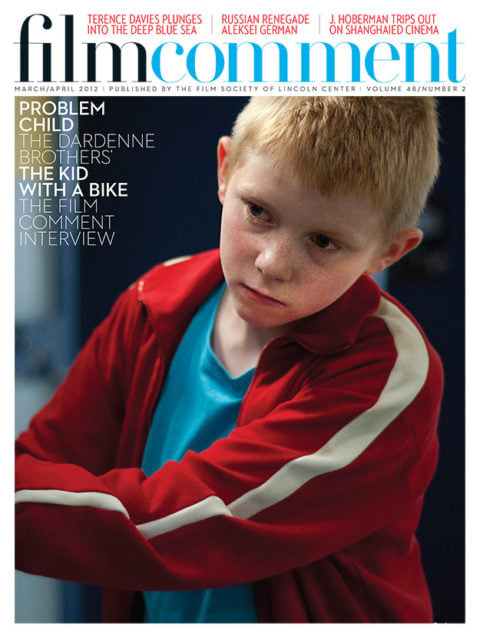
Appearing on The Daily Show to discuss Red Tails—a war drama based on the exploits of the 332nd pursuit squadron known as the Tuskegee Airmen, the first African Americans to fly combat for the U.S. military—executive producer George Lucas explained: “It’s one of the first all-black action pictures ever made. It’s exactly like Star Wars . . . The story is too fantastic and wonderful to cram into two hours. If we get a good first weekend . . . there is a prequel and a sequel and they’re better than this movie by a long shot . . . I took the soft center.”
Lucas’s illuminating interview addressed some of my expectations and ambivalence about the movie both as a filmmaker and as a daughter. My father, Lt. Col. Lee (Buddy) Archer, was a Tuskegee Airman, a decorated war hero recognized as the first black flying “ace” of World War II. He and his wingman Wendell O. Pruitt were known as “The Gruesome Twosome,” and he named his P-51 Mustang “Ina the Macon Belle” after my mother. Dad and his friend Capt. Roscoe C. Brown (the first to shoot down a German fighter jet) consulted on the production, inspiring the young cast in their portrayals. With uncharacteristic bad timing, Dad passed away in January 2010 and did not get to see the completed film.
Having heard romantic and riotous war stories of training, combat, and postwar days firsthand from Airmen all of my life, an initial Red Tails preview screening proved disappointing. “Which one is Uncle Buddy / Dad / Grandfather?” I was asked, but I couldn’t recognize him and felt a double loss from his absence in the narrative. But after two more viewings of the improved film, I can now review what’s there rather than what’s not.
One note to begin with: “the first all-black action picture”? What about the 1926 picture The Flying Ace, produced by The Norman Studios with an “all-colored cast,” and advertised as “the greatest airplane thriller ever produced.” Its “6 Smashing Reels” featured mystery, laughs, romance, and special effects: for one daring aerial rescue scene, the camera rotates until completely upside-down!
Unlike the jam-packed Flying Ace, Lucas doesn’t attempt to cram the full Tuskegee Airmen experience into one movie. The truncated “soft center” begins in media res at the meticulously re-created Ramitelli, Italy air base as the fresh but highly trained pilots are assigned to routine strafing missions in substandard equipment. Through the persistent efforts of dignified Col. Bullard (played by Terrence Howard in Richard Widmark mode) who pressures military brass stateside to deploy the segregated unit, they advance to escorting grateful bomber crews, dogfighting in technically advanced P-51s, and eventually confronting German jet aircraft in a decisive battle.
When Lucas self-effacingly disparaged the film (“better than this movie…”), he also displaced the director of Red Tails, Anthony Hemingway, who goes unmentioned in the interview. The confused authorship helps explain certain formal conflicts within the movie. Lucas focuses on the truly spectacular air battle sequences at the expense of characterization and backstory. The composited characters are flat, especially the white soldiers who recite wooden expository dialogue. Still, the Airmen are effectively portrayed by an appealing black cast that includes musicians Ne-Yo and Method Man and others familiar from Hemingway’s character-driven TV work on The Wire and Treme. As in the genre films such as 1951’s Flying Leathernecks that Lucas emulates, the “types” among the Airmen are expressed by nicknames: reckless “Lightning” (David Oyelowo), troubled “Easy” (Nate Parker), impetuous “Ray Gun” (Tristan Wilds), and playful “Joker” (an excellent Elijah Kelley).
One longs for more scenes between the ensemble on the ground, but the emphasis on aerial (and digital) technology leaves the characters without context. There’s a particularly troubling absence of black women (but for a painting on Lightning’s plane) who go unmentioned—no gal back home? no sisters, no Mamas?—nor do we ever see the African Americans who followed the squadron’s adventures.
But black America did follow and continue to treasure the Airmen’s chronicle of fighting racism abroad and at home, desegregating the military and, arguably, the movies. The pilots had careers, families, and often lived to be sprightly octogenarians eventually consulting on movies like Red Tails. Why confine this side of the story to prequels and sequels? Whether it runs for two hours or for “6 Smashing Reels!” their story deserves a fuller depiction.
A “corny” but effective moment stays with me. After a victorious mission each pilot approaching the base runway executes a 360-degree victory roll, rendered through a combination of trick flying, acting, and digital camerawork rotating the image (like The Flying Ace!), intercut with shots of the excited ground crew and backed by a majestic Terence Blanchard score. This joyous sequence celebrating youth, duty, daring, and the pleasure and freedom of flight is where I see Dad portrayed.
© 2012 by Ina Diane Archer








